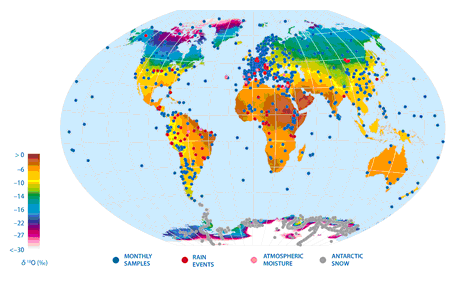Izaña Station joined the Project GNIP Network (Isotopes in Precipitation)

The use of isotopes of the water molecule has become an important tool in the analysis of atmospheric processes that give rise to global phenomenon of climate change, while posing significant paleoclimatic applications. The stable isotopes, primarily H218O and 1H2H16O (H2O and HDO) are important climate tracers that are being used to reconstruct the past climate of our planet, allowing us to determine the origin, transport and mixing processes occurring in the mass air, ie, its history.
These hydro applications of isotopes of water have led to the International Atomic Energy Agency (IAEA) in collaboration with the World Meteorological Organization (WMO) has been developing and implementing an international network for the measurement of water isotopes in precipitation, called the Global Network for Isotopes in Precipitation (GNIP) which became operational in the 60’s and which is intended to characterize the isotopic variability in precipitation over the entire planet.
In early 2011 the station Izaña has joined the network of stations that make up the international project GNIP, Station No. 6001000, (28 º 18 ’36”N, 16 ° 30′ W, 2365 m), becoming part of the network of stations associated with this project coordinated in Tenerife by the professor at the University of La Laguna, Dr. D. Juan Carlos Guerra García that belongs to the Hydrometeorology Research Group of the University. This addition to PIG has been possible thanks to the development of the project “Study of the isotopic composition of precipitation and water vapor in the atmosphere over the Canary Islands for the characterization of local, regional and Global Process Involved in climate change over the subtropical Region (ECOMISAAC ) funded by the Canary Agency for Research, Innovation and Information Society (Canary Islands Government), led by Dr. Guerra, and conducted in collaboration with the Center for Atmospheric Research from AEMET at Izaña.

Global distribution of oxygen-18 (per mile, ‰) in precipitation produced by interpolation of long-term annual average of about 700 GNIP stations.






